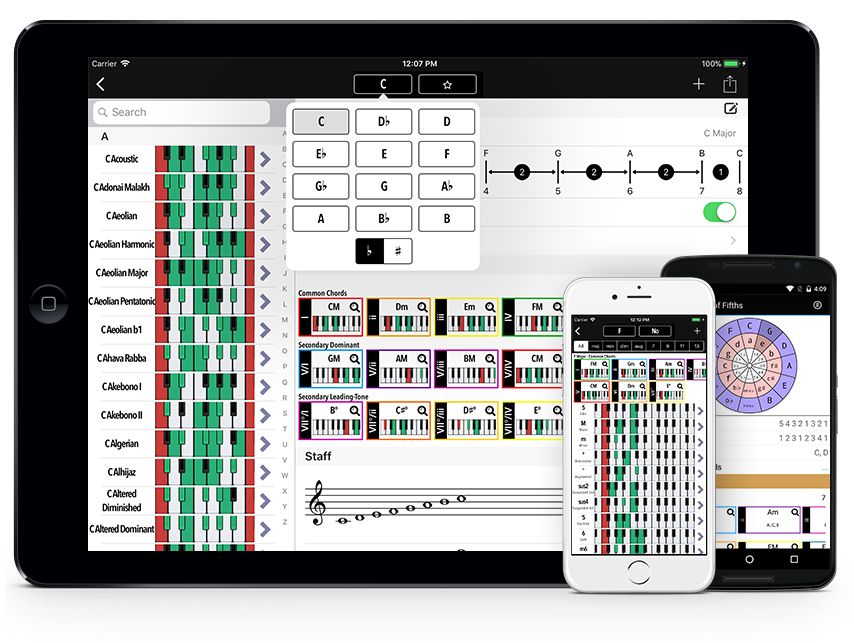

Substantial overhaul to how preview chords are triggered, now able to control octave, velocity, and duration. Changelogġ.1.3: Fix for chord velocities always triggering at full volume instead of using MIDI velocityġ.1.2: Improved direct chord triggering, MIDI can now be abutted or overlapping (Only most recent Note On will trigger chord)ġ.1.1: Fix for mislabeled Dominant 7 degree in direct lookups (notes were correct, but it was called Major 7) Minor Pentatonic (Chords based off Minor)ĭirect Lookup makes song writing a breeze, and since you already know the key and the scale, playing the accompanying lead sounds is also made simple.Major Pentatonic (Chords based off Major).Connecting the “Direct Chord CV Out” on the back of Index to an instrument of your choosing allows you to build progressions by ear just by playing single midi notes. The only exception is the distance between the. The 7th degree can also be flatted, opening up the option for dominant chords and other interesting chords. Inverted chord structures should include all chord tones and use no more than one octave between adjacent voices. From this table you can select which you would like to see visualized on the keyboard display, and even add extension notes up to the 13th to add color to your progression. Index will show you a table of 7 diatonic chords that will sound great together based off the notes of that scale. First, set the device to any key, and choose one of the many scale tonalities.
The Chord Identifier will function for most major chords. The Chord Identifier serves as a helping hand when you have a melody of notes and would like to find the chords name of those notes. If you’re looking to quickly and intuitively build a progression from scratch, or just learn to play in a new key, this is the feature for you. A useful tool that will help is the Chord Identifier (Reverse Chord Finder). Feedback is greatly encouraged if any chords are found to be missing or incorrect, and will be dealt with swiftly. This a feature that took many months of development and fine tuning to get right. 7th Chords (Major, Minor, Dominant, Diminished)ĭue to complexity of this problem and the contextual nature of certain higher order chords, Imagine it, all in one place: A chords dictionary, Reverse Chord and Scales Look up, A Scales Dictionary, Chord Progressions that you can test out and play.Triads (Major, Minor, Diminished, Augmented).All Intervals (2 note building blocks of chords).The following chords and their inversions are supported: This is a powerful feature for building chords by ear, learning inversions and extensions, and quickly jamming with fellow musicians. It displays the resulting root and full chord name as well as commonly used shorthand, while also showing the chord across the keyboard visualizer. Index can detect all intervals and every common chord consisting of up to 7 notes as quickly as you can play them, including their inversions. Seventh and ninth chords simply stack additional thirds on top.Ī useful strategy for learning chords is to write out all chords by hand.For the first time ever in Reason, simply play MIDI into Index and you’ll instantly get the name of the chord you’re playing. Click the Instrument button to switch between piano, guitar, ukulele, and music notation.

Thus, to use the simplest example, a major chord (starting from the bottom) consists simply of a major third, then a minor third on top of that, whereas a minor chord is the reverse. Start by selecting a root note and chord type at the top. It’s vital instead to understand how each chord is constructed, which is really quite simple: All common chords are built on thirds, and those thirds are either major or minor. While printable chord charts for piano are handy to the intermediate student and for occasional reference, it’s important not to have to rely on them. The chart of Advanced Piano Chords consists of major and minor triads with added sixths, suspended 4 and 2, dominant seventh with suspended 4, minor-major seventh, half-diminished seventh and ninth chords. It contains the major, minor, diminished and augmented triads, as well as dominant, diminished, minor and major seventh chords. This Free Piano Chord Chart is designed to be used as an aid to learning music theory and for occasional reference.


 0 kommentar(er)
0 kommentar(er)
